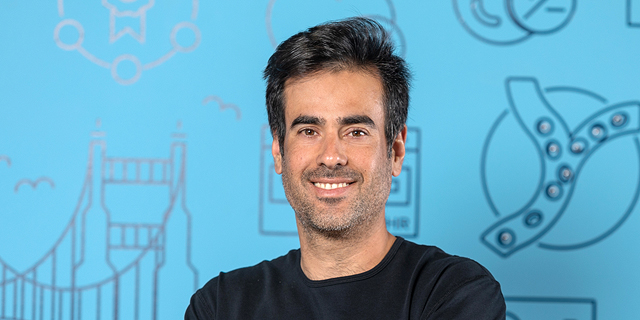
Opinion
Technology can cure the American healthcare system
"The American healthcare market is facing an inevitable revolution that will be based on innovative and secure technology and on changes in corporate culture due to Covid-19," writes Oron Afek, co-founder and CEO of Vim
Why is the global economy concerned by the shortcomings of the American healthcare system? Currently, healthcare costs in America exceed 18 percent of its GDP. This contributes to financial instability within America and on a global scale, as America is a leading global economic force. The social and economic failure of this system has grown more and more pronounced over the past few decades, reaching a peak during the Covid-19 pandemic. Like other countries who struggled with their response to the pandemic, Covid-19 demonstrated the holes and weaknesses within a system that hasn’t been working for some time.
Healthcare in the United States is first and foremost a business: It is the largest industry in the country employing one of every eight Americans. It is unsustainably expensive, and the quality of care it provides is on par with care provided in many OECD countries. The current American healthcare system was built in the free market spirit with a strong lobby that protects the interests of existing stakeholders such as healthcare providers, insurers, and pharmaceutical companies. This approach left hundreds of millions of insured people to the mercy of inefficient market forces where incentives are misaligned. Although many American workers are provided with insurance via their employers, they are still required to pay high deductibles and therefore often forgo essential treatments, including preventative treatments. As a consequence, many Americans develop worsening health conditions. The economic hardships of insured individuals and the unwillingness of employers to fund quality long-term preventive care, has resulted in a system that is reactive, not proactive. Even worse, most care provider compensation is based on an outdated “time and materials” model, also known as fee-for-service, and as such, the system serves their interest to increase their patient panel while presenting their patients with costly treatments. It is by no surprise that C-sections are so common in America, three times higher than in many single payers countries such as Israel. Behind every C-section is a care delivery organization who will earn several times more money than for a regular delivery.
Despite the ingrained nature of this complex system, there have been efforts in recent years to break the mold and create more openness and parity. The Affordable Care Act, for example, provided health insurance to residents who could not afford insurance or who did not receive it through their employers. However, it fell short of changing how employed individuals receive insurance through their employers. While there are efforts among some groups to create a single payer system in America, the strong financial incentives and political climate have led to uncertainty over how long it will take to achieve a true single payer system - if even possible.
Given the challenges of overcoming a system inclusive of multiple payers and competing incentives, it’s evident that technology can be a first-rate catalyst for changing the face of American healthcare. The goal is to build a national, Amazon-like marketplace of healthcare services that will transparently expose to policyholders, service providers, and insurance companies the range of medical treatments, inclusive of cost and quality metrics, that will allow them to compare and make informed decisions based on real-time data. The technological challenge involved in building such a marketplace is immense, because medical databases are strewn across many historic systems from the 1990s without APIs that can be connected. These barriers will not be able to stop the vital need to change the face of the American healthcare system for long, as it must adopt molds of sophisticated competition through technological means.
It is not surprising that Covid-19 contributed greatly to the entire healthcare ecosystem’s realization that the existing situation cannot continue. During the pandemic, many physicians lost their client base and the number of physicians who went bankrupt was the highest in American history. The shock from the past year and the realization that more epidemics can be expected in the future propelled the value-based care model. Through this model, both physicians and insurance companies share economic incentives to maintain the health of patients and members through quality treatments. Over the next three years, health providers are planning to increase the scope of value-based care contracts tenfold from the current, small percentage.
As such, the American healthcare market is facing an inevitable revolution that will be based on innovative and secure technology and on changes in corporate culture due to Covid-19. The coming revolution is a huge opportunity for Israeli entrepreneurs to demonstrate their proven creativity and innovation, and to act on the many opportunities in fields in which Israel excels: AI and data analytics, digital transformation of historical systems, telemedicine, and more. The entry into Israel of the venture capital firms Optum Ventures and Anthem Venture Partners, both specializing in health services, could help many Israeli entrepreneurs penetrate the American health market in the coming years, during which groundbreaking solutions will be required.
The time is ripe for a fundamental change of the American healthcare system. The ramifications of Covid-19 sped up the adoption of value-based care and advances in technology will revolutionize an antiquated system. Aligning incentives will create healthy competition between market players and giving power back to patients and members through access and information will, for the first time, establish transparency and trust within the American healthcare system.
The author is co-founder and CEO of Vim